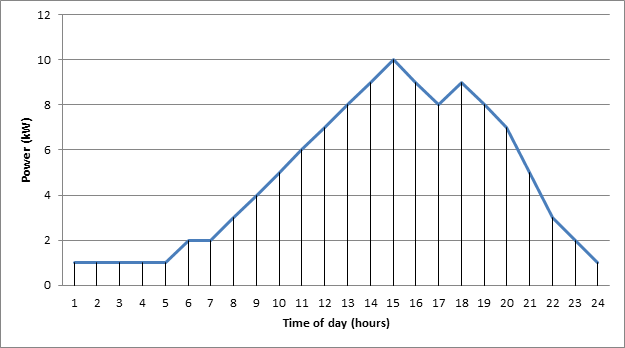Small lithium-ion batteries are
quite popular in mobile electronics applications and also for use as drive
batteries for hybrid and plug-in electric vehicles. Lithium-ion batteries have
a very high charge density with a comparatively light weight. They can handle a
large number of charge and discharge cycles with very low energy dissipation
(i.e. high energy retention time) before discharge. These batteries also have a
high round trip efficiency between 85% to 90% (Abele,
Elkind, Intrator, & Washom, 2011) .
Lithium-ion batteries would seem
ideal for energy storage if not for their current limitations. Lithium is
considered to be a rare metal with limited global availability. Lithium is also
highly reactive in water and air requiring that the batteries be sealed from
the environment with many internal mechanisms to protect against pressure buildup
and power surges (Abele, Elkind, Intrator, &
Washom, 2011) .
Lithium-ion batteries also “age” or degrade even when not in use. There is
noticeable capacity deterioration after one year, with many batteries failing
after two or three years (Battery University, 2010) .
Lithium-ion
batteries consist of a positive electrode made of Lithium cobalt oxide (LiCoO2)
and a negative electrode made of carbon (C). They are separated by a thin micro-perforated
plastic sheet that allows the ions to pass between electrodes (Battery
University, 2010) .
This creates the flow of electricity during discharge (Figure 1).
Figure 1 basic diagram of a lithium-ion battery during discharge.
While charging,
the electron flow is reversed; the overall chemical reaction is:
Though the energy density of
lithium-ion batteries is ideal, the limitations of this technology have mostly
kept lithium-ion batteries out of consideration for large scale energy storage.
Of course with energy storage, change is the only constant. Very recent
developments have started to show promise for lithium-ion batteries in smaller
scale energy storage applications. One example involves repurposing the spent lithium-ion
batteries from the Chevrolet Volt automobile to store energy in a 25-kW, 50-kWh
energy storage device. Once the Volt drive batteries lose 30% of their capacity
they are no longer valid as drive batteries for the automobile. However, the
remaining 70% of capacity can be used for smaller scale storage applications (Danko, 2012) . Other examples
include the development of containerized lithium-ion storage units such as the
Saft, Intensium Max, which is aimed towards applications to support wind or
solar electricity generation. These units have an energy rating in the 400 kWh
to 600 kWh range. Future developments
that address the limitations of lithium-ion batteries will likely move this
technology further towards mainstream large scale energy storage (Saft, 2012) .
The high power-to-weight ratio of lithium-ion
batteries has, in recent years, made them very appealing in the aerospace
industry. In the Boeing 787 Dreamliner, the use of lithium-ion batteries is
part of what makes the plane lighter and 20% more fuel efficient than its
predecessors. Unfortunately in January of 2013 the entire fleet of 787's was
grounded primarily because the lithium-ion batteries have been igniting and
releasing smoke into the cabin (Bennet, 2013) .
Works Cited
Abele, A., Elkind, E., Intrator, J., & Washom, B.
(2011). 2020 Strategic Analysis of Energy Storage in California. Los
Angeles: California Energy Commission. Publication Number: CEC-500-2011-047.
Battery University. (2010). Is Lithium-ion the
Ideal Battery? Retrieved January 7, 2013, from Battery University:
http://batteryuniversity.com/learn/article/is_lithium_ion_the_ideal_battery
Bennet, D. (2013, January 18). Why Are the
Batteries in Boeing's 787 Burning? Retrieved January 19, 2013, from
Bloomberg Businessweek Technology:
http://www.businessweek.com/articles/2013-01-18/why-the-batteries-in-boeings-787-are-burning
Danko, P. (2012, November 19). Old Volt Batteries:
Out Of The Car, Into The Home? Retrieved January 7, 2013, from Earth
Techling:
http://earthtechling.com/2012/11/old-volt-batteries-out-of-the-car-into-the-home/
Panasonic. (2007). Lithium Ion Batteries.
Osaka: Panasonic.
Saft. (2012, April). Intesium Max. Retrieved
January 7, 2013, from Saft Batteries: http://www.saftbatteries.com/doc/Documents/aviation/Cube946/C081_3-Intensium%20MaxContainer_EN%20-%20PROTEGE.7507d077-584f-4845-8d96-cfb6fed53fc6.pdf





